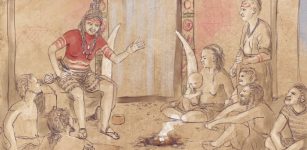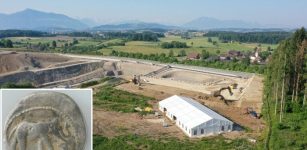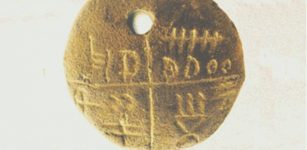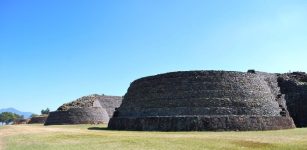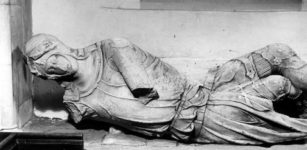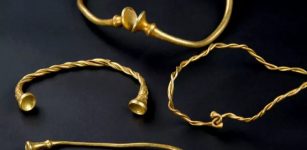Bacteria Found In 4,000-Year-Old Human Molars Found In Cave – Responsible For Tooth Decay And Gum Disease – New Study
Conny Waters - AncientPages.com - Researchers have found well-preserved evidence of oral bacteria, in two 4,000-year-old human teeth in a limestone cave in County Limerick, Ireland.
A tooth specimen prior to ancient DNA sampling. Credit: Lara Cassidy/Trinity College Dublin/PA
The cave is cool, dry, and alkaline, and the teeth are believed to have belonged to a man from the Bronze Age period.
The bacteria samples show the bacteria is a leading cause of tooth decay and is also responsible for gum disease.
They also found “the first high-quality DNA from Streptococcus mutans), an oral and harmful bacteria that contributes to cavities in the human mouth.
The cave’s conditions may have contributed to the exceptional preservation of S. mutans DNA. While other teeth in the cave showed advanced dental decay, there was no evidence of caries on the sampled teeth. However, an exceptional amount of mutans sequences were found in one tooth root.
“We were very surprised to see such a large abundance of mutans in this 4,000 year old tooth” said Lara Cassidy, an assistant professor at Trinity College Dublin and senior author of the study.
Killuragh Cave, County Limerick, Ireland. Image credit: Sam Moore and Marion Dowd/Molecular Biology and Evolution
“It is a remarkably rare find and suggests this man was at high risk of developing cavities right before his death.”
“A large abundance” of S. mutans also indicates imbalance because, as they wrote, “other streptococcal species were virtually absent from the tooth sample.” This means the natural balance of all bacteria in the mouth from the pre-disease state - has been disrupted.
Alongside the S. mutans genome, the authors reconstructed two genomes for T. forsythia (Tannerella forsythia), a bacteria involved in gum disease – and found them to be highly divergent from one another, implying much higher levels of strain diversity in prehistoric populations.
Alongside the S. mutans genome, the authors reconstructed two genomes for T. forsythia – a bacteria involved in gum disease – and found them to be highly divergent from one another, implying much higher levels of strain diversity in prehistoric populations.
“The two sampled teeth contained quite divergent strains of T. forsythia” explained Iseult Jackson, a PhD candidate and first author of the study. “These strains from a single ancient mouth were more genetically different from one another than any pair of modern strains in our dataset, despite these modern samples deriving from Europe, Japan, and the USA. This is interesting because a loss of biodiversity can have negative impacts on the oral environment and human health.”
The study of DNA related to the teeth found in the cave shows that these disease-causing bacteria have changed significantly from the Bronze Age to today,
These changes include the consumption of sugar, which is widespread today and may largely affect our teeth.
The study was published in the journal Molecular Biology and Evolution
Written by Conny Waters - AncientPages.com Staff Writer





